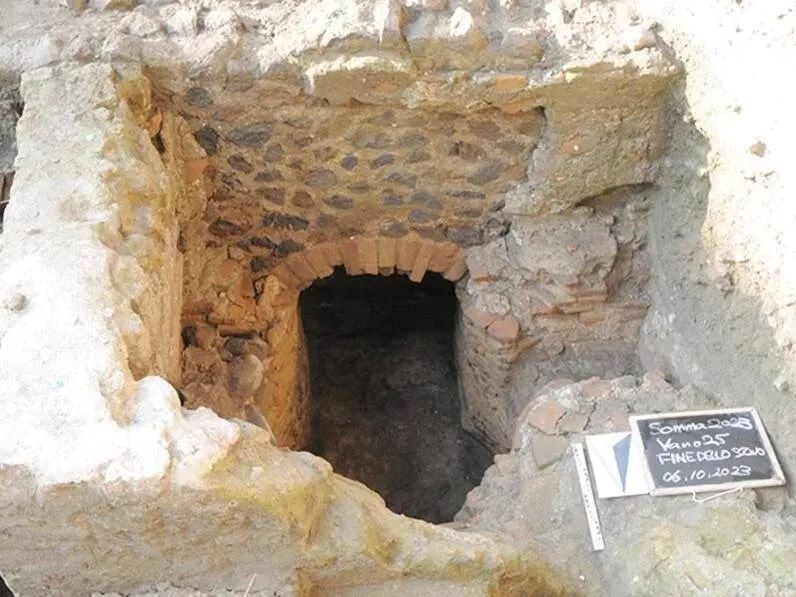[video] Archaeologists claim they found a villa where the first Roman emperor died
Archeologists from the University of Tokyo, Japan, claim they have discovered a villa where the first Roman emperor, Augustus, died in year 14 CE, at the age of 75. The ruins of the villa were found at the archeological site called Somma Vesuviana near Mount Vesuvius, not far from Naples, western Italy. The building itself was destroyed by the eruption of Mount Vesuvius in 79 CE.
The Japanese researchers have been exploring the site for decades, since 2002, but only recently they uncovered the structure that stands distinct from other buildings and could be identified as a villa of a rich patrician.
More to read:
Roman invasion of Britain began from modern-day Netherlands
According to Roman sources, Emperor Augustus died at a villa north of Vesuvius in 14 CE, but the precise location remained unknown until now.
The researchers believe this is Augustus' lost villa.

"There is a description that [the villa] was consecrated … but its existence has not been identified to this day. In recent years, our excavations have uncovered parts of buildings that were buried during the eruption of Mount Vesuvius in 79 CE. This means that for the first time in this area, a building contemporary with the villa of Emperor Augustus has been found with scientific support," said Mariko Muramatsu, leader of the university’s Somma Vesuviana excavation project, in a statement.
The site includes ruins of two separate villas: one buried in the 79 CE eruption and another constructed later on top of it. Until recently, researchers had only been aware of the newer structure. In the older villa, archaeologists identified four rooms with remnants of walls, roof tiles, and other objects.
One room contained 16 amphorae, large ancient jars used for storing wine and a sign of the tenant’s wealth. Another room had substantial amounts of charcoal and ash from a fire likely used for heating water in a private bathhouse, indicating the villa belonged to someone of great influence.

In the mid-second century, new buildings were constructed atop the buried villa, using its footprint as a guide. This new construction included a grand hall with brick arches, marble columns, and statues. By the fourth century, the site had transformed again into a large-scale wine production facility, preserved by another Vesuvius eruption in 472.
Historians had previously believed that the 79 CE eruption caused minor damage to this area compared to the southeast of the mountain. However, the older villa’s ruins suggest a significant destructive impact, likely from pyroclastic flows - fast-moving currents of hot gas and volcanic matter.
More to read:
Archeologists discover ancient site used by Egyptian pharaoh on march to expand his kingdom
Researchers theorize that Augustus may have once occupied the older villa. Born Gaius Octavius Thurinus, he was granted the name Augustus - the "exalted one" - by the Roman Senate in 27 BCE. Although he did not use the title "emperor," he was a pivotal figure in Roman history, doubling the empire’s size during his 40-year reign.
The Somma Vesuviana excavation team is working to expand the digs and learn new insights into Emperor Augustus' achievements and the early Roman Empire.
The University of Tokyo provided a video about its discovery.
***
NewsCafe is an independent outlet that cares about big issues. Our sources of income amount to ads and donations from readers. You can support us via PayPal: office[at]rudeana.com or paypal.me/newscafeeu. We promise to reward this gesture with more captivating and important topics.




![[video] Trump just slapped penguins on Antarctic islands with tariffs](/news_img/2025/04/03/news0_mediu.jpg)


